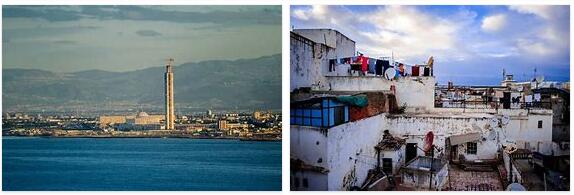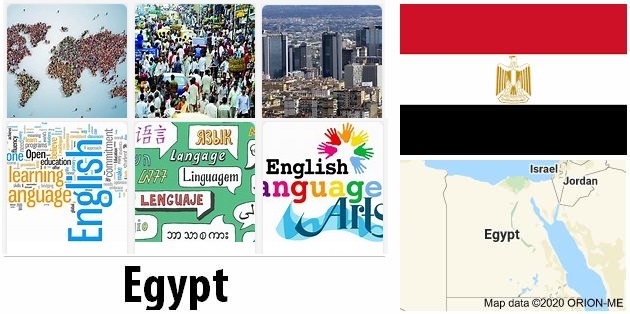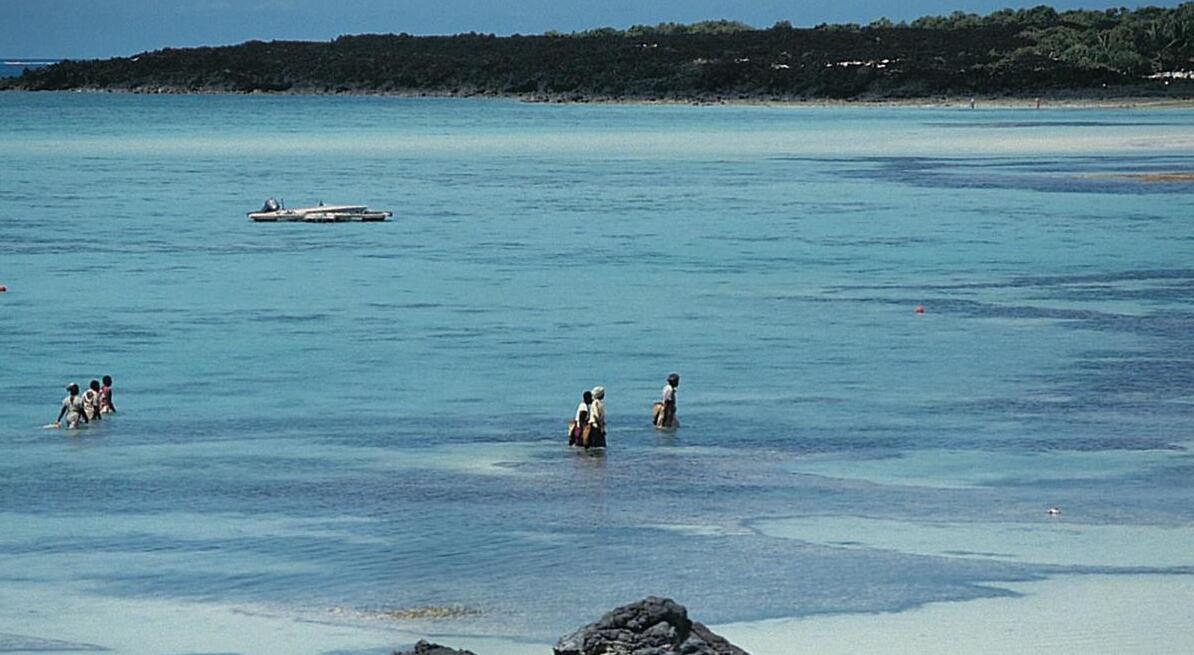Landmarks in Algeria
Visit Algeria, a country in northwest Africa, as part of a study trip. Visit the most important cities of Algeria, such as the capital Algiers, Oran, Constantine, Annaba or Batna, and get to know the culture of these cities. In terms of culture, Algerian literature is heavily influenced by the Arab cultural heritage. Admire the main attractions like the mosque El Jdid, the Basilique Notre Dame d’Afrique, the Monument des Martyrs, the Roman tomb of Tipasa, the Place Audin or the port of Agier; the landmark of Oran’s Sidi El Houari, the famous beaches Corales, La Grande, Les Andalouses and Bousfer, the Fort of Santa Cruz or Pachas Mosque in Oran; the Gustave Mercier Museum, the Ben Badis Mosque, the Ahmed Bey Palace or the statue of the Roman Emperor Constantine in Constantine; the international airport and university in Annaba. Enjoy an educational tour through Algeria!
Timgad
Timgad is located in Algeria and is the new name for the city of Thamugadi, whose well-preserved ruins are about 40 kilometers east of the city of Batna. In 1982, the excavation site was declared a UNESCO World Heritage Site, as the typical architecture of the Roman city foundations is still clearly visible here, which is no longer recognizable in other cities of Roman origin due to later changes.
Timgad was built in the year 100 by the Roman Emperor Trajan in a previously unpopulated place in the north of the Aurès Mountains. The city was a well-known military colony, the square shape and subdivision of which can still be seen today. The large, former city had numerous buildings and public facilities: the forum, the capitol, the temple, the assembly hall, a library, a theater with 4,000 seats and 14 public baths. The city was supplied with water by an aqueduct from a spring several kilometers away.
There are very interesting tombs in the well-preserved ruined city of Timgad. Not only that figurative representations and inscriptions are discovered in good condition on the vertical grave sites; the small grave slabs in front of it are even more impressive: These are set tables for the deceased. You can see nicely decorated serving plates, pans, dishes such as bread and fish, but also spoons and plates. Repeatedly, depressions can also be seen in which fresh food and drink offerings for the deceased could be placed.
In the north of the extensive excavation area, a small museum has been set up for visitors, which presents selected finds such as ceramics, statues, small finds and glass objects.
El Kala National Park
lush green vegetation, numerous lakes and a multitude of animals
Algeria has a large number of national parks and one of the most diverse and beautiful parks is El Kala National Park. The park is located in the northeast of the country and a lot is done here to protect the area and educate the public about environmental protection. UNESCO recognized El Kala National Park as a Biosphere Reserve in 1990 because it is an extremely unique ecosystem. Since its inception in 1983, conservationists have worked hard to ensure the survival of the park’s animals and plants.
The El Kala National Park is known for its diversity of ecosystems. There are breathtaking mountains, dense and picturesque forests and numerous, clean lakes. With such a wide variety of different habitats, the park is home to around eighty thousand animals and birds, many of which are on the endangered species list. Informative tours are offered regularly in the park, in the hope of creating more public awareness of environmental protection among the thirty thousand or so visitors who visit the park each year.
For avid bird watchers, the park has a large number of bird watching towers and younger visitors can visit the cute mini zoo and explore the exciting eco-museum. Visitors to Algeria should take the opportunity to explore this magnificent national park, because El Kala National Park is truly a natural wonder and a fascinating attraction for anyone interested in flora and fauna.
Djémila
The ruined city of Djémila – a jewel from the past
The Roman ruins of Djémila are the structural remains of the ancient Algerian city of Cuicul. Djémila is 900 meters above sea level and is in the Setif province. Today visitors can look at and marvel at a large number of buildings such as basilicas, forums, Christian churches, triumphal arches and former private houses. The ruined city also had a theater for 3,000 visitors, a capitol and several thermal baths. At the beginning of the 20th century the excavations of the ruins of Djémila began and lasted until 1957. Significant exhibits and finds such as large and beautiful mosaics are shown in the Museum of Djémila. The Roman ruins of Djémila were recognized in their entirety as a ruined city as a UNESCO World Heritage Site in 1982.
Cuicul or Djémila, as it was called earlier, was a Berber settlement that became a Roman veterans’ colony at the end of the 1st century under the emperor Nerva. The city flourished and prospered from the 2nd to the 4th centuries. It owed its wealth and prosperity primarily to agriculture – because of the humid climate at the time, the area was considered a “granary” of Rome. Several basilicas, two forums, a temple, the Christian churches, triumphal arches and richly decorated private houses are still well preserved today. Djémila is considered a good example of Roman town planning adapted to mountain conditions. A visit to the ruined city is not only worthwhile for adults, families with children will also experience a lot of exciting things in these buildings that were built 1900 years ago.
Kasbah of Algiers
A maze of alleys – the Kasbah of Algiers
Where does the heart of the city of Algiers beat? A clear answer: In the Kasbah, the historical center of this beautiful metropolis. Even if this UNESCO World Heritage Site can be found in North Africa, the Kasbah of Algiers has Turkish roots through the Ottoman leaders of the early 16th century. Today the old city on the Mediterranean Sea is a maze of narrow streets, proud mosques, fortresses and castles.
The garbage disposal comes with donkeys
Numerous very old buildings in the old town of Algiers are in danger of collapsing, and some of the approximately 350 adobe houses are currently being restored. The days when the garbage disposal is doing their job in the Kasbah are particularly exciting, because the legacies of civilization are transported by donkeys. The architects of earlier eras did not make it easy for themselves when planning these houses. To protect them from overheating in the hot months of summer, only a few windows were installed. The whitewashed facades were given wooden roofs and the entrances were decorated with beautifully patterned tiles.
A composer played the organ
The traces of French colonial rule and the war of independence have been erased almost everywhere in Algeria. What has remained in Algiers is a poem carved in marble in the entrance area of the Ketchoua Mosque. It extols the superiority of Islam. The mosque was once converted into a Christian church by the French, as the tower with the bell next to the minarets still testifies to today. The French Emperor Napoleon III. attended a mass here and the organ was played by the famous composer Camille Saint-Saens.
The “eternal flame” of the martyrs
In the Kasbah of Algiers, stairs lead from the port up to the Boulevard Che Guevara and thus to the National Theater and the former winter palace of the governor. The “eternal flame” burns in the monument of the martyrs. The eleven-aisled Al-Kebir mosque and the grave mosque of Sidi Abderrahmane are also worth seeing in the old town. This is a historically rich place that travelers from another world should only visit with a local guide.
Visit worth seeing cities in Algeria
Here you will find study trips and round trips through the metropolises of Algeria
Algiers (Alger)
Take a group tour through Algiers, the capital of Algeria! Algiers is the largest city in Algeria and at the same time an industrial city, transport hub and cultural center with universities, numerous institutes, galleries and museums. The main attractions in Algiers are the El-Jdid mosque; the Musee Le Bardo, which houses ethnographic collections of fossils, tools, and weapons from the Paleolithic and Neolithic periods, as well as costumes and jewelry from around the country; the National Gallery; the citadel; the Monument of the Martyrs; the Roman tomb of Tipasa, but also other unforgettable attractions that will surely impress you. Get to know this city and its culture on a study trip!



